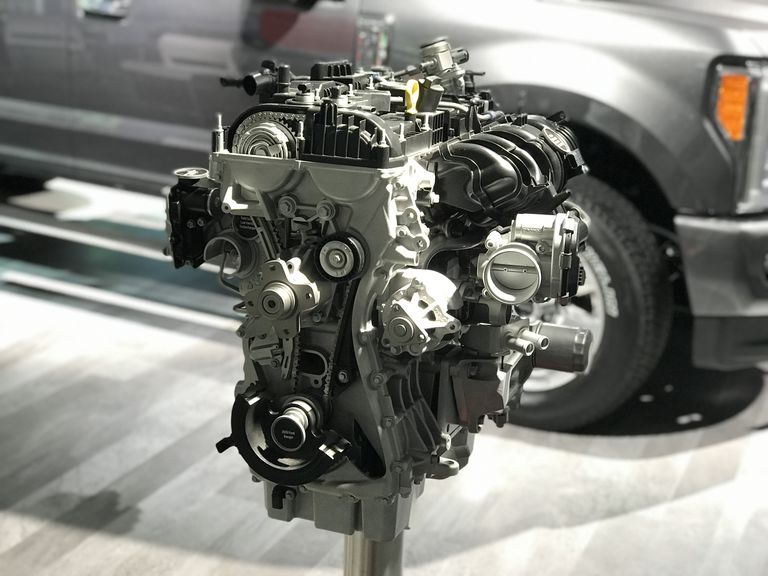What Makes an Auto Engine Run Smoothly: Top Tips for Optimum Care
The smooth operation of a vehicle engine is basic to both efficiency and durability, making ideal care an essential responsibility for lorry proprietors. What certain steps should you focus on to ensure your engine remains in peak problem?
Routine Oil Modifications
One of one of the most critical facets of automobile maintenance is guaranteeing your engine receives regular oil adjustments. Engine oil lubricates internal parts, minimizes friction, and aids preserve optimal operating temperatures. With time, oil breaks down because of heat, impurities, and the natural byproducts of combustion, bring about minimized performance and prospective engine damage.
The majority of producers advise altering the oil every 5,000 to 7,500 miles, but this period can vary based upon driving conditions and oil kind. Artificial oils may permit for longer intervals in between changes. Normal oil changes not only improve engine efficiency however additionally improve fuel performance, as tidy oil promotes smoother procedure.
Overlooking oil adjustments can result in sludge build-up, which impairs blood circulation and can result in serious engine concerns. It is important to inspect oil degrees frequently and check for any unusual adjustments in color or consistency, which might indicate contamination or deterioration.

Maintaining Coolant Levels
Maintaining appropriate coolant levels is vital for stopping engine getting too hot and making certain optimum efficiency. The coolant, commonly a combination of water and antifreeze, flows via the engine, taking in heat and preventing thermal stress. Insufficient coolant can lead to increased engine temperatures, which might cause severe damage or perhaps complete engine failing.
To keep optimal coolant levels, consistently evaluate the coolant storage tank, usually located in the engine bay. Ensure the coolant is loaded to the advised mark, as suggested in your car's owner guidebook. It is a good idea to inspect the levels at the very least once a month or eventually trips, especially throughout severe climate condition.
If you observe that the coolant level is consistently reduced, there may be a leakage in the air conditioning system, which ought to be attended to quickly to avoid more issues. 2.2 ford ranger engine. Furthermore, flushing the coolant system every a couple of years can help get rid of any type of accumulated particles and ensure reliable heat exchange
Monitoring Air Filters

It is advised to check the air filter every 12,000 to 15,000 miles, or a lot more regularly if driving in dusty or negative problems. A straightforward visual examination can typically disclose whether the filter is unclean or damaged. It ought to be replaced without delay. if the filter appears stained or has visible dust accumulation.
Making use of a premium air filter made for your specific car design can additionally boost engine efficiency. Additionally, some vehicles may take advantage of reusable filters that can be cleaned up and reinstalled, offering a economical and eco-friendly choice.
Inspecting Glow Plugs
Glow plugs are vital components of a vehicle's review ignition system, straight influencing engine efficiency and efficiency. They create the trigger that sparks the air-fuel blend in the combustion chamber, helping with the engine's power generation. Regular inspection of trigger plugs is vital for preserving optimal engine feature and avoiding potential concerns.
During an evaluation, search for indicators of wear or damages, such as cracks, carbon build-up, or extreme gap widening. A healthy and balanced spark plug typically displays a light brown or tan shade. Dark soot or oil down payments can indicate inappropriate burning, while a raw or white appearance might suggest getting too hot. Both conditions call for immediate focus to stop more engine damage.
It's suggested to evaluate spark plugs every 30,000 miles, or as advised in your vehicle's owner guidebook. Additionally, think about changing them according to the producer's standards, as old or used stimulate plugs can result in misfires, lowered fuel effectiveness, and raised emissions.
Tracking Tire Stress
Under-inflated tires can lead to lowered gas performance, raised tire wear, and endangered handling. Normal tracking of tire stress is essential for click now optimal vehicle operation.
Tire stress need to be examined a minimum of as soon as a month and eventually trips. Make use of a dependable tire pressure scale to gauge the stress when the tires are chilly, ideally before the vehicle has actually been driven for at the very least 3 hours. Describe the car's owner manual or the placard situated on the vehicle driver's side door jamb for the supplier's advised stress levels.
It is necessary to note that tire stress linked here can rise and fall with modifications in temperature; a drop of 10 ° F can cause a 1-2 psi reduction in pressure. In addition, aesthetically examine tires for any indicators of wear or damages during your surveillance regimen. Preserving proper tire stress not only boosts automobile safety yet likewise improves gas effectiveness and prolongs tire life, inevitably contributing to a smoother engine efficiency.
Final Thought
In conclusion, keeping an automobile engine's smooth operation needs diligent focus to several vital elements. Regular oil modifications, correct coolant levels, tidy air filters, well-kept trigger plugs, and ideal tire stress collectively add to enhanced performance and long life. Following these upkeep practices not just improves fuel performance but likewise advertises a safer driving experience. Inevitably, a proactive method to engine treatment is important for making certain reliability and performance with time. 2.2 ford ranger engine.
One of the most crucial elements of auto upkeep is guaranteeing your engine gets routine oil modifications. Engine oil lubes inner parts, reduces friction, and helps maintain optimal operating temperatures. Regular oil modifications not just enhance engine efficiency however additionally boost gas performance, as tidy oil advertises smoother procedure.
Inadequate coolant can lead to raised engine temperature levels, which might create extreme damages or also overall engine failure.

Comments on “Explore the Key Features of the 2.2 Ford Ranger Engine and Its Fuel Efficiency”